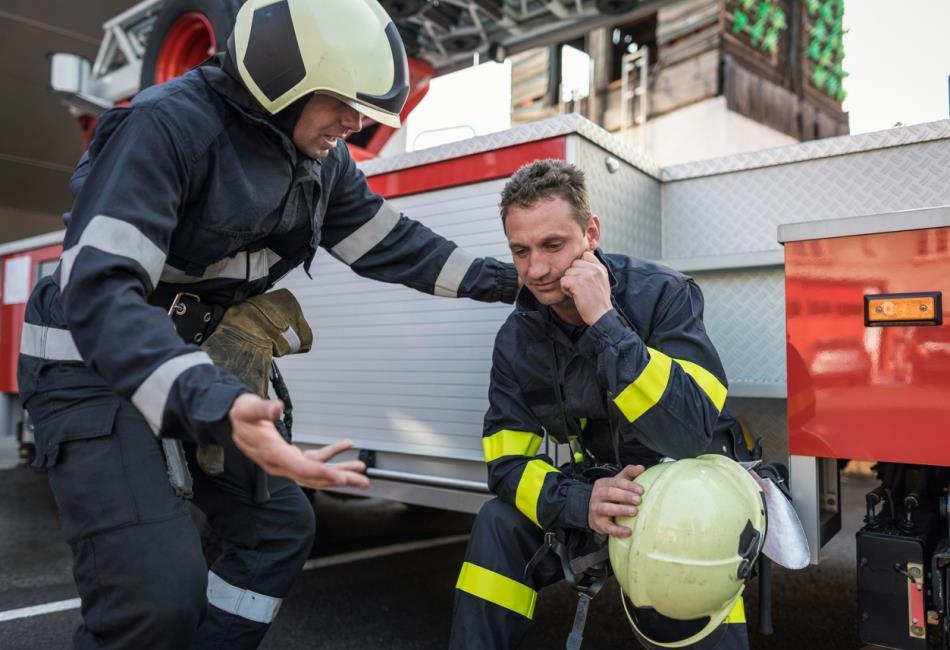First responders are trained to deal with high-pressure, life-threatening situations. Whether performing CPR, stopping bleeding, or assisting in accidents or assaults, they often handle patients with unknown medical histories.
This includes those who may carry infections like HIV, syphilis, gonorrhea, or hepatitis, sometimes without even knowing it themselves ตรวจ STD.
Here’s why protection matters:
- STDs like HIV and hepatitis B/C can be transmitted through blood contact, especially via broken skin or mucous membranes.
- Injuries on the job, such as needle sticks, scratches, or contact with open wounds, can be risky.
- Post-exposure treatment exists, but prevention is safer, simpler, and more cost-effective.
- The right techniques not only protect first responders but also prevent cross-contamination to other patients or coworkers.
Contents
Common Exposure Risks in the Field
Here are some real-world scenarios where first responders might be exposed to STDs:
- Performing mouth-to-mouth CPR without a barrier device
- Handling bleeding patients or those with open genital sores
- Managing victims of sexual assault
- Assisting individuals with drug overdoses, where used needles may be present
- Getting cut or scratched during a physical confrontation or rescue
The risks are often small—but they are real. Understanding the scenarios helps in applying the correct safety measures at the right time.
Essential STD Protection Techniques for First Responders
Let’s explore the best ways to stay protected while continuing to provide life-saving aid:
1. Use Personal Protective Equipment (PPE)
This is the first line of defense against infection.
- Gloves: Always wear disposable gloves when touching any patient, especially if there’s blood, open wounds, or bodily fluids.
- Face masks and eye protection: Use a face shield or goggles to prevent fluid splashes during CPR or trauma care.
- Gowns or aprons: These can protect your clothing and skin during high-risk calls involving heavy bleeding or childbirth.
Make sure your PPE fits properly, is undamaged, and is replaced between patients to avoid cross-contamination.
2. Practice Hands-Only CPR When Possible
For unresponsive adults in cardiac arrest, hands-only CPR (chest compressions only) is often sufficient until help arrives or an AED (automated external defibrillator) is used. This approach avoids mouth-to-mouth contact and reduces the risk of transmitting infections via saliva or blood.
When rescue breathing is necessary, use a CPR mask with a one-way valve. This device prevents fluids from passing back to the responder.
3. Handle Sharp Objects With Caution
Needle sticks are one of the highest-risk injuries for infection.
- Never try to recap a used needle.
- Dispose of sharps immediately in approved puncture-proof containers.
- Use tongs or tools to pick up syringes if found on scene.
- If a needle stick occurs, wash the area with soap and water and report it immediately.
Early treatment, especially within hours, can greatly reduce the risk of HIV and other infections.
4. Cover Your Own Cuts and Wounds
Before starting your shift, make sure any open cuts or abrasions on your skin are covered with waterproof bandages. Even small injuries can be entry points for infectious agents.
It’s also smart to keep hand sanitizer and antibacterial wipes in your gear bag, so you can clean up quickly after patient contact.
5. Follow Standard Infection Control Protocols
Most agencies follow universal precautions—treating all bodily fluids as if they’re potentially infectious. This simple but powerful concept ensures you take the same level of care with every patient, whether or not they have known infections.
Key steps include:
- Changing gloves between patients
- Using barriers for CPR or wound care
- Disinfecting surfaces, tools, and uniforms regularly
- Properly disposing of contaminated materials
6. Get Vaccinated
Vaccinations are a key part of infection prevention.
- The hepatitis B vaccine is recommended for all healthcare and emergency workers.
- Staying up to date with tetanus, hepatitis A, and other routine vaccinations helps protect against a wider range of threats.
Some departments also offer optional HIV pre-exposure prophylaxis (PrEP) for high-risk workers.
7. Use Body Substance Isolation (BSI) Techniques
BSI techniques take PPE a step further. This approach includes:
- Using fluid-resistant gowns when expecting large amounts of bodily fluids
- Double-gloving in high-risk scenarios
- Wearing boot covers or protective footwear if working in contaminated environments
First responders working in high-volume emergency zones (like disaster areas) benefit from mastering these methods.
What to Do After Potential Exposure
Even with all precautions, accidental exposures may happen. Here’s what to do:
- Clean the Area
Immediately wash needle sticks or wounds with soap and water. Flush eyes or mucous membranes with water or saline for at least 15 minutes. - Report the Incident
Notify your supervisor or department head. Fill out an exposure report detailing the situation. - Seek Medical Attention
Visit a healthcare provider for evaluation. You may be given post-exposure prophylaxis (PEP)—a medication regimen to prevent HIV or hepatitis infection if taken within 72 hours. - Follow Up Testing
Blood tests may be done immediately and again over several months to confirm no infection has occurred.
Prompt action is critical and could prevent a long-term health issue.
Promoting a Culture of Safety
Beyond individual habits, departments and agencies can support STD protection by:
- Offering regular training on universal precautions and bloodborne pathogens
- Keeping PPE and CPR barriers well-stocked and accessible
- Encouraging a no-blame culture when reporting exposures
- Having clear exposure management protocols
When safety is a team priority, everyone benefits—from responders to the communities they serve.
Final Thoughts
First responders perform some of the bravest and most selfless work in society. While the risk of STD exposure is real, it doesn’t need to cause fear or hesitation. By following smart, simple protection techniques—like using PPE, practicing hands-only CPR, handling needles carefully, and reporting exposures—you can do your job with confidence and peace of mind.
Remember: your safety matters, too. Protecting yourself ensures you’ll be there to keep saving lives, day after day.
